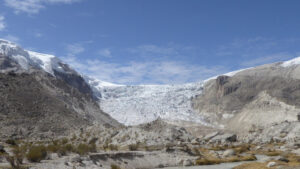Abstract/Description
The Australian alpine region is considered one of the most sensitive areas to climate change due to its narrow environmental niches, isolated habitats, interactions with anthropogenic and natural stressors. Reduced snowpack, low summer rainfall and increased temperatures in the Australian Alps are likely to lead to drier future conditions for plants, and alpine plants are likely to endure drought conditions over the summer months. Given these conditions, slow growth rates and the limited dispersal ability of alpine plants, it is crucial to understand how increasingly water-limited conditions will shape alpine plant communities in the future. Utilising in-situ experimental infrastructure that simulate a drier future climate, can provide an accurate reflection of future alpine microclimatic conditions and data necessary to compare short-term and long-term impacts. There is also a substantial gap in our understanding of the species- and community-level responses to climatic extremes, which is necessary to develop future landscape revegetation and conservation plans. We used rainout shelters installed across four alpine regions of Australian Alps, designed to restrict precipitation without altering other microclimatic conditions. The shelters allowed us to study how different alpine plants respond to experimental drought in-situ. We documented and analysed time-series species composition and above-ground biomass data to study impact on plant growth and community dynamics in control and drought induced plots. We found that the response of alpine plants to a drier future condition is species-specific. Graminoids showed more sensitivity and drought led to reduction in above ground growth. The variability in drought sensitivity among species indicates that alpine plants adopt diverse coping mechanisms to water stress, which are influenced by site characteristics and seasonal climatic conditions. The findings will help identify drought-sensitive and drought-tolerant species, and model predicted shifts in community composition for future landscape management and conservation strategies.


